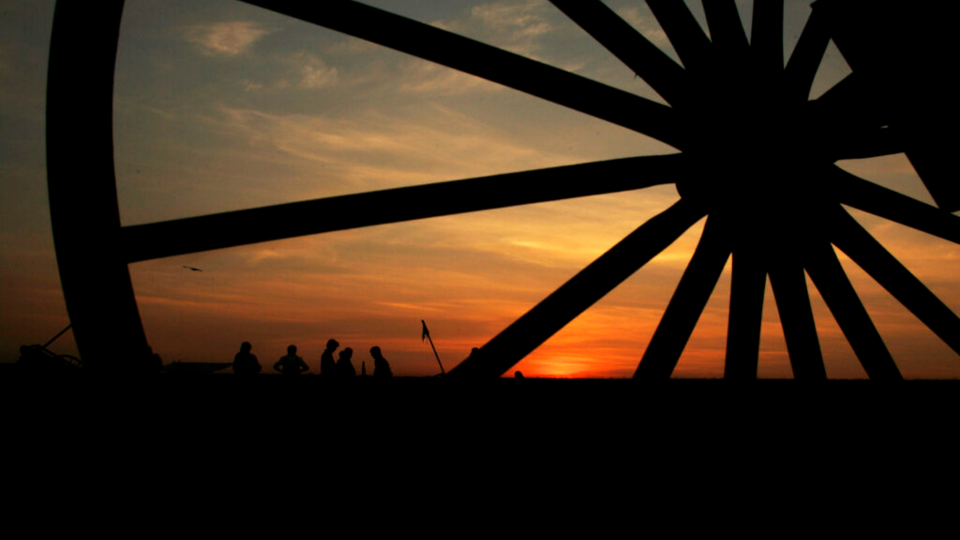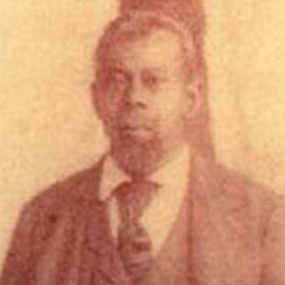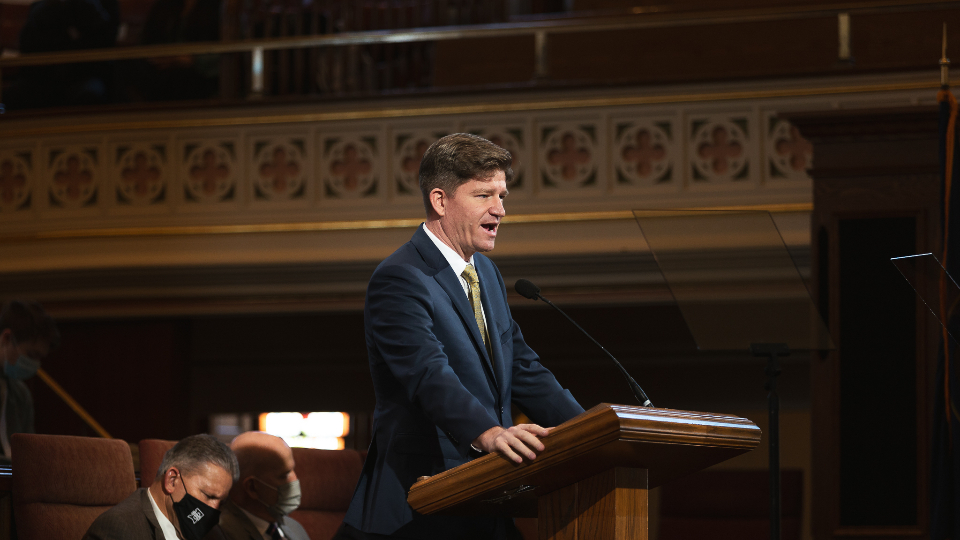
pioneer-truth
Sunset through a wagon wheel on the second day of the Farmington Utah South Stake Pioneer Trek held near Evanston, Wyoming, but on the Utah side of the border, June 26, 2008. Photo by Ravell Call, courtesy of Church News.Copyright 2022 Deseret News Publishing Company.
This story appears here courtesy of TheChurchNews.com. It is not for use by other media.
By Keith A. Erekson, Church History Department
Pioneer Day is a time for stories. Each year, storytellers surface in sunrise devotionals, around campfires and at family dinner tables to regale with tales about noble ancestors, weary travelers and hardworking community builders. Such storytelling goes back to the pioneers themselves, who sang that “soon [they’d] have this tale to tell” (“Come, Come Ye Saints,” “Hymns,” no. 30).
But the pioneers’ music also cherished truth as “the fairest gem” and “the brightest prize” (“Oh Say, What Is Truth?” “Hymns,” no. 272). Most had converted to a new faith, which also necessitated leaving behind family and traditions and homelands for the cause of truth. This year, may we honor the sacrifice of these pioneers by telling stories that are true, complete and unvarnished.
The Truth
We begin by observing that truth alone is not enough. Many deceptions operate by pairing a little bit of truth with other errors. Our best pioneer stories might invoke a phrase used in the courtrooms of many nations — we seek “the truth, the whole truth, and nothing but the truth.”
Indeed, a modern revelation teaches that “truth is knowledge of things as they are, and as they were, and as they are to come,” with the added warning that “whatsoever is more or less than this is the spirit of that wicked one who was a liar from the beginning” (Doctrine and Covenants 93:24–25; emphasis added). Our best pioneer stories will present the entire truth by including all that we can and removing the errors that creep in over time.
The Whole Truth

Mauli-Junior-Bonner
Green Flake was born into slavery in the mid-1820s and was in the first company of pioneering Latter-day Saints to reach the Salt Lake Valley in 1847. Photo courtesy of Church History Pioneer Database, courtesy of Church News.All rights reserved.Most stories do not contain the whole truth. True facts get omitted and forgotten over time. For example, tellings of the arrival of Brigham Young’s vanguard company usually omit that three of the participants were enslaved Black men — Green Flake, Hark Lay and Oscar Crosby. Audiences watching speakers on devotional stages flanked by United States flags have forgotten that the Salt Lake Valley formed part of Mexico in 1847 and that what is now the state of Utah was already inhabited by approximately 20,000 Indigenous people.
Frequently, the most insidious challenge to the whole truth is oversimplification. Storytellers imagine the past as a simpler and safer time, like the scenes in a Norman Rockwell painting. Complexity and individuality are often victims of oversimplified storytelling.
Consider the last film version of a pioneer story that you watched. Chances are, the story focused on a family or two in a single pioneer company. Most likely, the story’s protagonists pulled a handcart alone across a barren landscape. You watched them struggle uphill, shiver in the blowing snow, ration their food and weep at the graveside of their infant child. Perhaps you, too, shed a tear, before rejoicing at a scene of dramatic rescue.
The complete history of the pioneers turns out to be far richer and far more interesting. An estimated 70,000 people crossed the Plains, and the mortality rate for the group was only slightly higher than the national average at the time. One-third of the companies made the trek without a single death! Many of the pioneers came from different countries and spoke different languages. Sometimes they could not even understand one another; other times they disagreed with each other; sometimes they carried nationalistic or racialized stereotypes about one another. They had to lay aside their own prejudices and weaknesses to forge a multinational, multilingual and multiethnic community of Saints seeking a common cause of Zion.
The complete history of the Pioneer Day holiday often omits its own growth, from a devotional with a feast of thanksgiving in 1849 to an official state holiday today. The subsequent additions of old-timer reunions, rodeos, sporting events, high rates of traffic fatalities, and pie and beer reflect the truth that public celebrations evolve with ongoing needs and interests.

Erekson-Ensign-College
Keith A. Erekson, director of historical outreach and partnerships for The Church of Jesus Christ of Latter-day Saints, speaks to Ensign College students during a devotional at Assembly Hall on Temple Square in Salt Lake City on Tuesday, February 1, 2022. Photo courtesy of Ensign College, courtesy of Church News.All rights reserved.
Nothing but the Truth
Many stories also contain exaggerations or distortions that get added later. Snowbanks deepen, pathways run uphill, fish grow longer, the ordinary gets romanticized. I’ll hasten to add that not all perpetrators and retellers of exaggerated pioneer stories possess nefarious motives. Some seek to honor an ancestor or inspire faith. Others just want to teach a lesson or make themselves look important or informed. Some myths arise out of ignorance or from a well-meaning intention to fill in the gaps.
Many pioneer exaggerations connect to the handcart. Of the roughly 400 organized pioneer companies, only 10 were handcart companies. Of those 10, eight made the journey without significant incident. Yes, the companies led by James G. Willie and Edward Martin did suffer dramatically more, including a mortality rate more than five times the national average, but theirs was a very narrow case. Nonetheless, the handcart has emerged in movies, artwork, statues, parades and music as the singular visual representation of the pioneer experience. To make the handcart the symbol for the entire pioneer experience, and to make snowstorms the norm for 20 years of overland travel, is a stretch of the truth by any measure.
One particularly exaggerated story recounts an old man in the corner of a Sunday School classroom who declared that no member of the ill-fated Martin handcart company ever left the Church. The alleged old man died in 1906 and the alleged hearer did not share the story until 1943. A complete list of Martin Company members has not survived, but of those who were known to belong to the company, at least four later left the Church — two would move to Iowa and join the Reorganized Church of Jesus Christ of Latter Day Saints, now Community of Christ, while another took his family all the way back to England where he became a Baptist minister.
It’s a Long Story
Many pioneer stories do contain true facts and meanings. I think this is one reason why people can feel internal confirmations about them — because there is truth in them. Exaggeration can also make people feel angered by such stories — because there are errors in them. Because stories usually contain truth mingled with exaggeration, it is shortsighted to try simply to debunk them by turning them into myths. Instead, we should carefully analyze their contents. We should cherish what is correct (the truth), recover what has been omitted (the whole truth), and remove what was added later (nothing but the truth). Then we should serve another slice of pie while telling pioneer stories that are more than true.
— Keith A. Erekson is the Church History Department’s director of historical research and outreach and the author of “Real vs. Rumor: How To Dispel Latter-day Myths.”
Copyright 2022 Deseret News Publishing Company.

